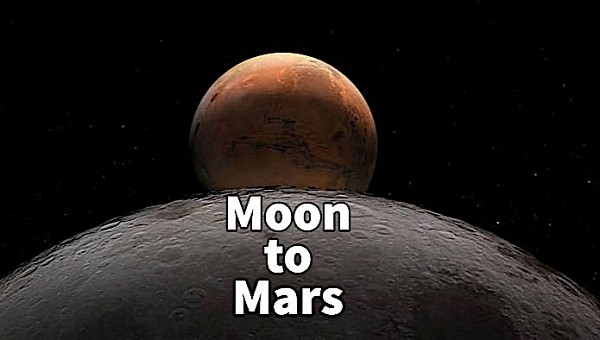It’ll soon be 62 years since humans left the confines of their planet and headed out into space. On April 12, 1961, Russian Yuri Gagarin performed a full orbit of Earth inside a spacecraft called Sputnik and opened the doors to countless other missions to orbit, space stations, probes and rovers sent all over the solar system, and even a couple of missions departing for the far reaches of space.
Despite the six decades and countless successful missions that have come to pass since that first flight, humans have only visited firsthand a single other celestial body: the Moon. Several crews and a total of 12 humans have been up there since 1969 as part of the Apollo program, and a lot more others are getting ready for a trip as part of the new Artemis program.
Exciting as it may be, the Moon, however, is not a planet per se, so we can’t really say we’re capable of interplanetary travel. With Artemis, however, the many trips to the Moon being planned are nothing but rehearsals for our first journey to Mars.
The Red Planet has been a target for space exploration hardware since the Viking 1 of the 1970s, much more than any other celestial body in our vicinity. Sung in books and movies, it also became the main target for space exploration dreams and, why not, even colonization.
NASA has always hinted Mars is a place it was considering for crewed missions, but it always stopped at that, hints. Last week, however, it took that bold stop and made the planet an official human missions target.
As of now, a so-called Moon to Mars Program Office has been established at the NASA HQ in Washington. Its main goal is to “carry out the agency’s human exploration activities at the Moon and Mars for the benefit of humanity.”
The Office will be in charge with anything and everything that has to do with missions to the Moon and Mars. It will develop hardware, help with mission integration, and come up with risk management procedures.
The man that will go down in the history books as the first leader of this group is Amit Kshatriya, former acting deputy associate administrator for Common Exploration Systems Development. He will be seconded by Lakiesha Hawkins as deputy and Stephen Creech as technical deputy.
NASA did not say what is first on the Office’s agenda, but expect a lot of interesting updates to come our way on a regular basis from now on.
Even with this first bold step taken toward the first crewed mission to Mars, we’re probably still a few decades away from that historic moment. The next ten years alone are dedicated to Artemis and its connected projects, including the lunar space station and on-surface habitats.
Exciting as it may be, the Moon, however, is not a planet per se, so we can’t really say we’re capable of interplanetary travel. With Artemis, however, the many trips to the Moon being planned are nothing but rehearsals for our first journey to Mars.
The Red Planet has been a target for space exploration hardware since the Viking 1 of the 1970s, much more than any other celestial body in our vicinity. Sung in books and movies, it also became the main target for space exploration dreams and, why not, even colonization.
NASA has always hinted Mars is a place it was considering for crewed missions, but it always stopped at that, hints. Last week, however, it took that bold stop and made the planet an official human missions target.
As of now, a so-called Moon to Mars Program Office has been established at the NASA HQ in Washington. Its main goal is to “carry out the agency’s human exploration activities at the Moon and Mars for the benefit of humanity.”
The Office will be in charge with anything and everything that has to do with missions to the Moon and Mars. It will develop hardware, help with mission integration, and come up with risk management procedures.
The man that will go down in the history books as the first leader of this group is Amit Kshatriya, former acting deputy associate administrator for Common Exploration Systems Development. He will be seconded by Lakiesha Hawkins as deputy and Stephen Creech as technical deputy.
NASA did not say what is first on the Office’s agenda, but expect a lot of interesting updates to come our way on a regular basis from now on.
Even with this first bold step taken toward the first crewed mission to Mars, we’re probably still a few decades away from that historic moment. The next ten years alone are dedicated to Artemis and its connected projects, including the lunar space station and on-surface habitats.







